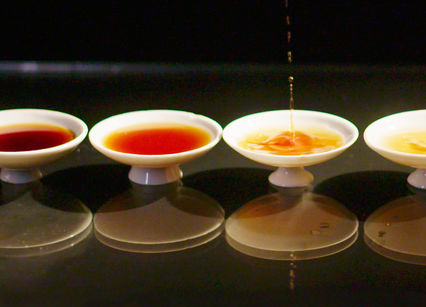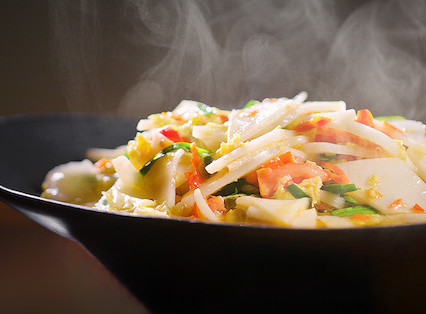The first part of Netflix’s new docuseries Flavorful Origins, Gansu Cuisine, was the perfect show to curb my cravings for home. Pre-pandemic, I had plans to visit my family in Lanzhou, Gansu, China. At first, I was optimistic that I could postpone the trip until a vaccine arrived, but the bitter reality is that I won’t be able to see my family for a while.
Fortunately, Netflix presented me with Flavorful Origins, the Mandarin docuseries highlighting cuisine from Gansu, Yunnan, and Chaoshan—provinces in China—and it was a binge-worthy medicine for my homesickness.
Each episode is bite-sized, ranging from 10 to 15 minutes as the program places unique Chinese ingredients centre stage. There are 40 episodes in total, and the first season, Gansu Cuisine, has 10.
The Gansu Cuisine season of the show is expertly shot, as it marries beautiful aerial shots of golden fields with tantalizing close-ups of the dishes. It guides audiences on a visually mouth-watering journey through diverse culinary traditions across the province to show, not tell, the stories of Gansu’s cultural cuisine.
The show successfully highlights the farm-to-table nature of cultural dishes by focusing on the landscape and food. Local farmers grow the ingredients, process them by hand, and then distribute them to urban centers.
There, chefs utilize versatile foods in various ways. Just buckwheat starch can be made into jelly noodles (凉粉), buckwheat crust (荞麦锅巴), or a local breakfast dish called guagua (荞麦呱呱).

Gansu Cuisine’s tightly packaged delivery shows how these dishes are a part of daily life, often as staple breakfast foods. It smoothly transitions from the quiet countryside to bustling cities, where hands are busy exchanging cash for food instead of kneading dough. Particularly in the episode “Beef noodles,” this style captures the essence of Gansu’s lively mornings.
Despite all its strengths, the show has a few shortcomings. The narrator is virtually the only person who speaks, which can be repetitive. Combined with the limited sound effects, my attention started to wander by the seventh episode. It would have been more impactful to hear personal anecdotes from the farmers in their dialect.
The narrator also spoke in such flowery and excessively figurative language that I, a native Mandarin speaker, needed to occasionally read the English subtitles. Fortunately, the subtitles were excellent. Unfortunately, that might be to compensate for the atrocious English dubbing. The diction improves in the later episodes, but in the beginning, it was a tad ear-numbing.
Another double-edged sword is the length of the episodes. The fact that they’re so short means it appeals to those with limited time or attention span as an easy appetizer. It successfully introduces the niche topic of Gansu cuisine to Western audiences.
Yet just like an appetizer, it fails to fully satisfy. Some parts feel rushed, especially when they try to show how the ingredients can be used in various recipes. It ends up as a flurry of shots, albeit aesthetically pleasing, but without a proper explanation of what is in a dish.
Overall, I greatly enjoyed Flavorful Origins. Of course, I have a personal connection that probably makes me biased, but it is a pretty solid show.
If you’re passionate about cultural foods, enthralling cinematography or just looking for a quick breather before or after your Zoom classes, take a bite out of this docuseries. Who knows? It could become your flavour-ite!
Featured image from IMDb.






